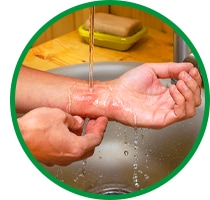
The NHS recently released their Hospital Accident & Emergency Activity statistics for 2021 to 2022, giving insight into how A&E services are operating post-pandemic. Despite the total number of A&E attendances falling in the past few years, patients are having to wait longer on average to get medical help.
To avoid busy A&E waiting rooms, you should know the difference between when you can treat an injury at home and when you need to seek medical attention. A&E is intended to serve patients with genuine life-threatening emergencies. If you have a less severe injury, you should seek treatment at an urgent treatment centre or treat yourself at home with first aid.
If you’re having a medical emergency and you’re unsure what you should do, the NHS recommends that you contact the NHS 111 emergency helpline.
The latest A&E injury and accident data
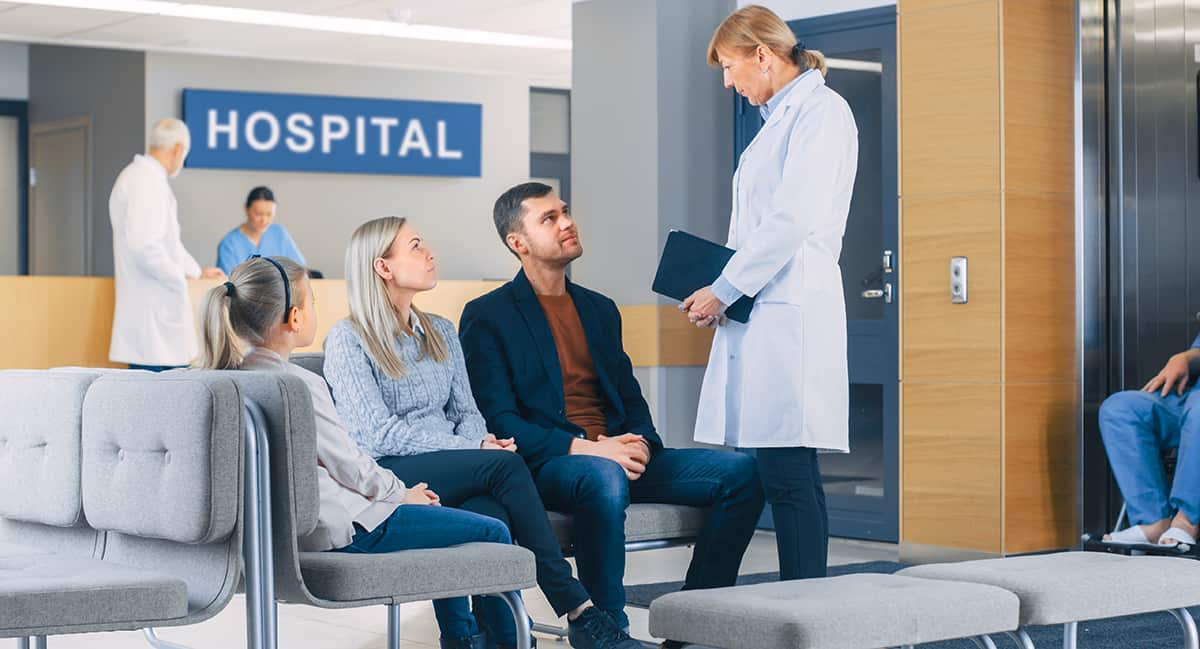
Data gathered from the NHS A&E statistics for 2021 to 2022 revealed that for the first time on record, no NHS Trust in England met their target of less than 5% of patients waiting for four hours or more to be assessed.
People are waiting longer than ever before to be treated in A&E. In fact, an average of 23% of patients spent more than four hours waiting to be assessed — a 10% increase compared to the previous period (a total of approximately five million attendances). The number of attendances that exceeded a four-hour wait time was higher in the 2021 to 2022 period alone than it was from 2012 to 2016. Attendances with wait times over 12 hours have spiked in number as well, reaching a count of almost one million in the 2021-22 period — more than the combined total recorded from 2014 to 2018.
This comes despite the period seeing the lowest number of attendances since 2018, discounting the dip in attendances during the COVID-19 lockdown — there were 24.4 million recorded attendances in the 2021-22 period (a single patient can have more than one attendance), and while that is a 40% increase on the previous period, it is still slightly lower than the 25 million seen in 2019-20 and the 24.8 in 2018-19.
Common injuries and accidents that send people to A&E
Falls
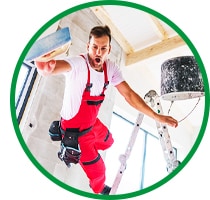 Falls are the leading cause of visits to A&E, accounting for over 42,000 initial admissions in the 2021-22
Falls are the leading cause of visits to A&E, accounting for over 42,000 initial admissions in the 2021-22 period. Falls commonly occur from household furniture like chairs or beds, or while using ladders or playground equipment.
Lower the risk of these kinds of accidents by checking equipment like ladders before use and taking care to use furniture safely and for their intended purpose.
Older people are more at risk to receive serious injuries as the result of a fall. Risk of falling for older adults can be reduced through various means, such as exercising to improve strength and balance.
Burns
You can soothe minor burns by running them under cool water for at least 20 minutes, ensuring that the water is running over the burn rather than directly onto it. After cooling, wrap the burn in cling film or a non-fluffy dressing to protect the wound.
- View our guide to treating burns at home here
- Learn about firework first aid and safety here
Plant or gardening related injuries
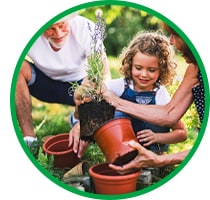 A significant number of A&E admissions were due to plant-related
A significant number of A&E admissions were due to plant-related injuries, such as cuts received from thorns, spines and sharp leaves, or injuries from contact with venomous plants. Wear high-quality gardening gloves, long sleeves, long trousers and closed-toe footwear while gardening to reduce the risk of injury.
If a thorn or spine is stuck underneath your skin, carefully wash the injury site with soap and water before removing the debris with a clean pair of tweezers. Once the debris is removed, clean the wound with a sterile saline solution or soap and water.
If you receive a cut while gardening, clean the wound thoroughly and apply a clean plaster or appropriate sterile dressing. For cuts that won’t stop bleeding, where there is a lot of blood loss or where the victim has a loss of sensation of movement near the wound site, you should get them to A&E as soon as possible.
Injuries received while gardening run a higher risk of infection. If you experience swelling, itching or redness several days after you’ve received an injury, seek medical advice as soon as possible.
- See general advice to avoid DIY and gardening related accidents here
When to call 111
If you’re having a medical emergency and you’re not sure what to do, the NHS 111 helpline can assist. To get help, call 111 or visit the website at 111.nhs.uk.
Once you contact NHS 111, you’ll be asked a few questions about your situation. Depending on the nature of your emergency, 111 will:
- Tell you what local service can help
- Connect you to a GP, nurse, emergency dentist or pharmacist
- Get you a face-to-face appointment if necessary
- Give you a time to go to A&E, possibly reducing your time spent there
- Tell you how to get any medication you may need
- Give you advice to treat your problem at home
What should I keep in my first aid kit to stay prepared?
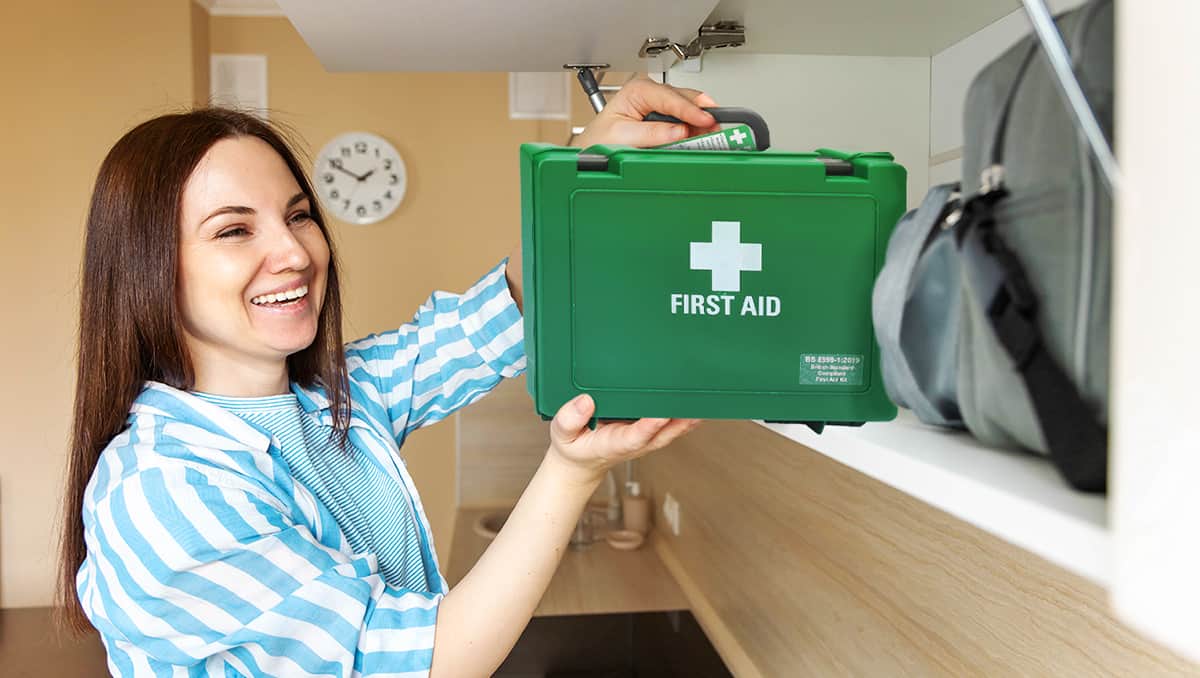
An appropriately stocked first aid kit increases the safety of you and your loved ones and enables you to treat injuries at home, reducing trips to A&E. The minimum first aid kit contents suggested by the HSE are the following:
- A leaflet with general guidance on first aid
- Individually wrapped sterile plasters of assorted sizes
- Sterile eye pads
- Individually wrapped triangular bandages, preferably sterile
- Safety pins
- Large and medium-sized sterile, individually wrapped, unmedicated wound dressings
- Disposable gloves
While we think this is a good start, there are a few extra items we think are crucial to an effective at-home first aid kit.
 Extra plasters
Extra plasters
Plasters are among the most used items in any first aid kit, meaning you can never have enough! Blue detectable plasters can also be very useful to have if you spend a lot of time in the kitchen.
Burn gel
Burn gels offer efficient soothing for burns when it is impractical to run the affected area under cool water for 20 minutes.Instant cold pack
Instant cold packs are ideal for reducing pain and swelling associated with sprain and strain injuries.Tweezers, scissors and other tools
Tweezers and scissors often prove to be invaluable items in any first aid kit. Other tools like sticky tape and a thermometer are worth consideration as well.Our Family First Aid Kit contains all the items we recommend for an effective at-home first aid kit.
Additional A&E statistics
While falls from furniture or equipment was far and away the leading cause of A&E admissions in 2021-22, the second and third most common reasons were foreign objects entering into the eye or body orifice and cycling injuries respectively. Hot drinks, foods and cooking oils injured over 2,000 people, and more people were admitted for flammable clothing catching alight than for assault with a firearm.Most injuries that result in a visit to the A&E are preventable, and many are treatable at home with the appropriate first aid. Knowing the difference between when you can treat an injury yourself and when you need to seek treatment can save you time and energy and avoids increasingly busy waiting rooms. An up to date first aid kit prepares you for the medical problems you can treat at home, further reducing the need to visit A&E.
Read our other blogs for more information on first aid, or contact us for further advice and information on our products.
About the author:
Jo Stokes is a writer, marketer and trained first aider at First Aid Online.
Find out more about Jo.
By Jo Stokes
Explore more: Home first aid & safety


